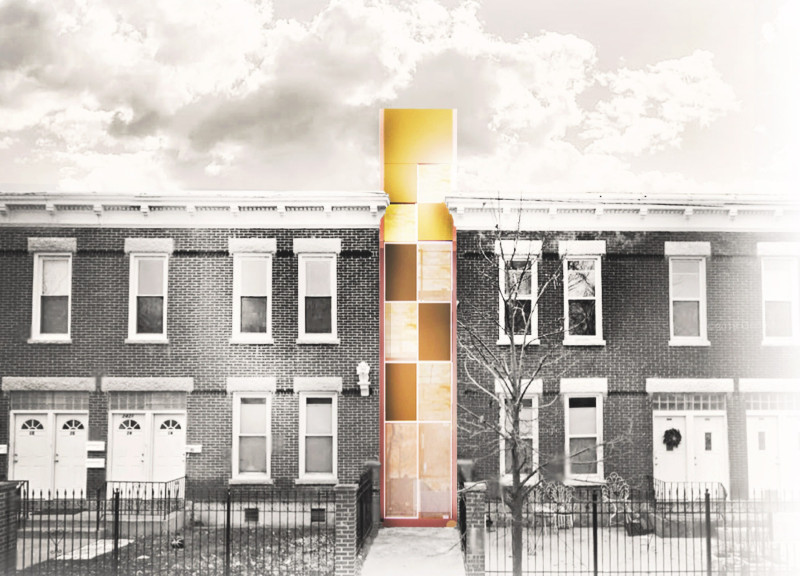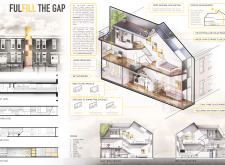5 key facts about this project
The ground level features an open-plan layout with a living and dining area adjoining the kitchen. This arrangement encourages communal activities while optimizing spatial efficiency. The second level is dedicated to private sleeping areas, complemented by adaptable spaces for study and storage. The use of flexible design elements accommodates the diverse needs of residents. The upper level includes a terrace, enhancing the connection to the outdoors and maximizing natural light throughout the structure.
Sustainable design is a core principle of this project. The selection of materials, such as reclaimed oak wood flooring and dual-pane glass windows, ensures energy efficiency while creating a warm and inviting atmosphere. Polycrystalline solar panels integrated into the roof provide renewable energy, contributing to the home's overall sustainability. Moreover, the inclusion of a living green wall not only promotes biodiversity but also enhances the building's aesthetic appeal while improving indoor air quality.
The unique aspects of "Fulfill the Gap" lie in its innovative design solutions and adaptability. The use of a desk-to-bed module exemplifies multifunctional furniture that allows for the seamless transformation of spaces, accommodating both work and relaxation within a compact area. Additionally, the shelving-to-dining table module illustrates the project’s commitment to maximizing design efficiency, ensuring that every element serves a practical purpose without overcrowding the environment.
Another distinctive feature is the integration of daylight strategies through flush-glazed skylights and strategic window placements. These elements enhance the interior environment, supporting energy performance and occupant well-being. The overall design promotes a balanced harmony between built and natural environments, essential in urban locales.
In summary, "Fulfill the Gap" represents a thoughtful response to contemporary urban living challenges. By focusing on sustainability, flexibility, and efficient use of space, this project provides a comprehensive approach to modern architecture. To explore the architectural plans, sections, designs, and ideas that inform this project further, interested readers are encouraged to delve into the project presentation for comprehensive insights.























